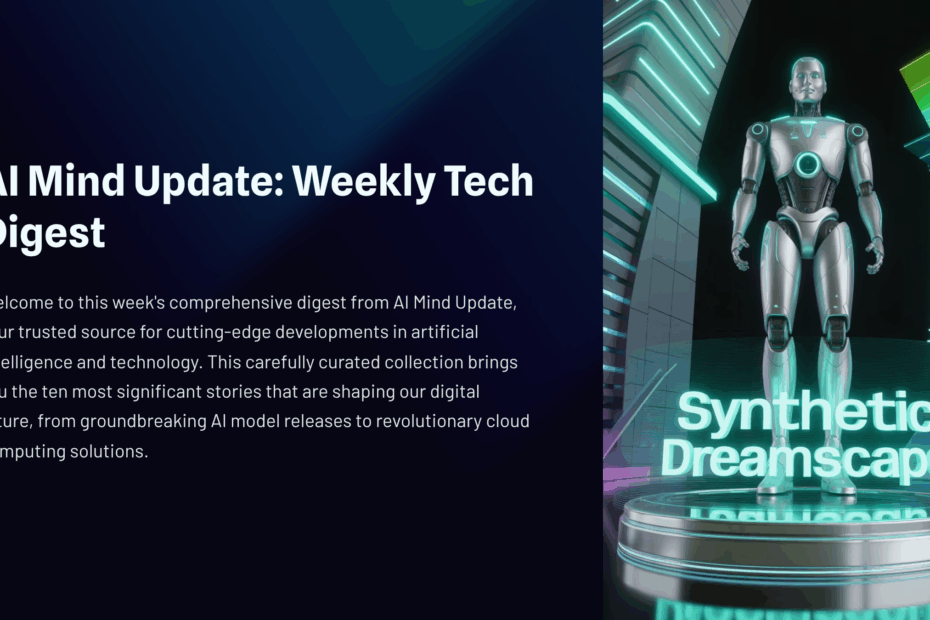🚀 This week in AI: From OpenAI’s 100K GPU supercluster to Meta’s superintelligence ambitions – catch up on all the major tech developments! #AI #TechNews #Innovation
🎧 Listen to the Audio
If you’re short on time, check out the key points in this audio version.
📝 Read the Full Text
If you prefer to read at your own pace, here’s the full explanation below.
Movie
Stay ahead of the curve with our comprehensive roundup of the latest developments in artificial intelligence, cloud computing, and emerging technologies. This week brings groundbreaking announcements from industry giants like OpenAI, Meta, Google, and Microsoft, alongside innovative updates that are reshaping the tech landscape.
1. .NET Aspire 9.4: Revolutionizing Cloud-Ready App Development
Microsoft’s latest release of .NET Aspire 9.4 marks a significant milestone in cloud-native application development. This major update introduces CLI core commands and AI integrations that are transforming how developers build and deploy distributed systems.
The standout feature is the new command-line interface (CLI) that operates independently of Visual Studio, compiled with native Ahead-of-Time (AOT) technology for superior performance and portability. This development addresses the growing demand from the developer community for more flexible, IDE-independent tools.
Key Implications:
- Reduced development time from hours to minutes through streamlined setup processes
- Enhanced AI integration capabilities with Azure AI Foundry support
- Interactive dashboard improvements for real-time monitoring and resource management
- Better accessibility for developers across different development environments
The AI integration aspect is particularly noteworthy, enabling developers to host AI models and agents directly within their applications. This aligns with the broader industry trend of embedding intelligence at the application level rather than relying on external services.
Source: https://aimindupdate.com/2025/08/05/net-aspire-9-4-cloud-ready-apps-get-a-boost-with-cli-ai/
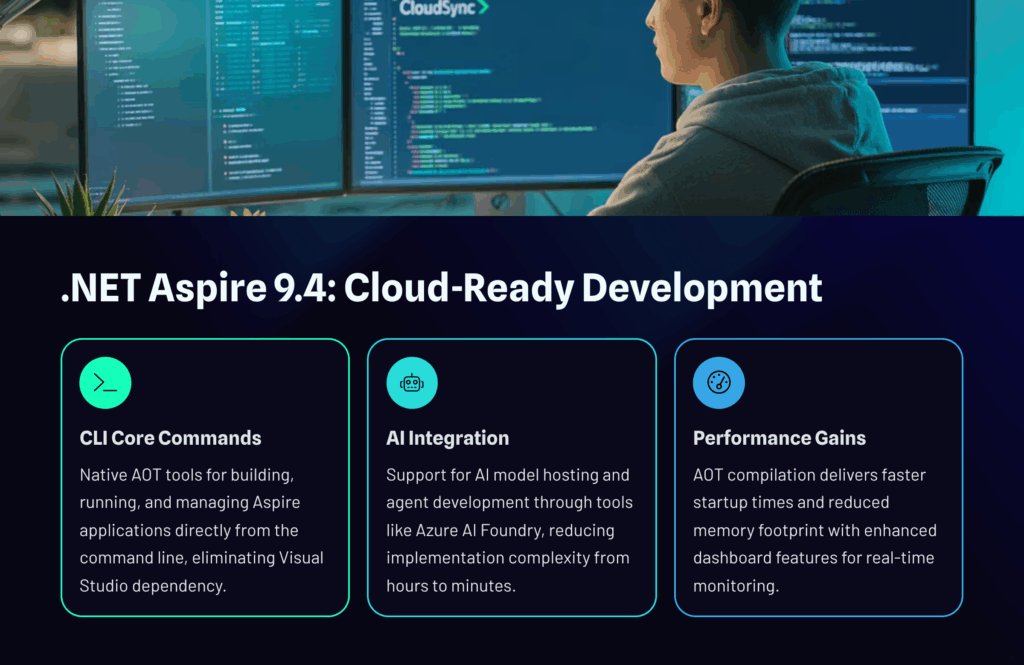
2. LLaMA 3: Meta’s Open-Source AI Game Changer
Meta’s LLaMA 3 continues to make waves in the open-source AI community, democratizing access to advanced language model capabilities. This comprehensive analysis reveals why LLaMA 3 represents a paradigm shift in how we approach AI development and deployment.
Unlike proprietary models from competitors, LLaMA 3’s open-source nature allows developers worldwide to modify, improve, and build upon the technology. The model comes in multiple sizes (8B and 70B parameters), making it accessible to organizations with varying computational resources.
Technical Innovations:
- Advanced transformer architecture with improved token efficiency
- Extended context windows up to 128k tokens from the original 8k
- Reinforcement Learning from Human Feedback (RLHF) for better response quality
- Multilingual support across eight languages with planned expansions
The community response has been overwhelmingly positive, with over 800 tokens per second inference speeds reported on optimized hardware. This performance, combined with the ability to run locally without API dependencies, makes LLaMA 3 an attractive option for cost-conscious organizations and privacy-focused applications.
Looking ahead, LLaMA 4 developments are already showing promise with multimodal features and enhanced multilingual training, positioning Meta as a serious challenger to closed-source alternatives.
Source: https://aimindupdate.com/2025/08/04/llama-3-meta-a-beginners-guide-to-metas-game-changing-ai/
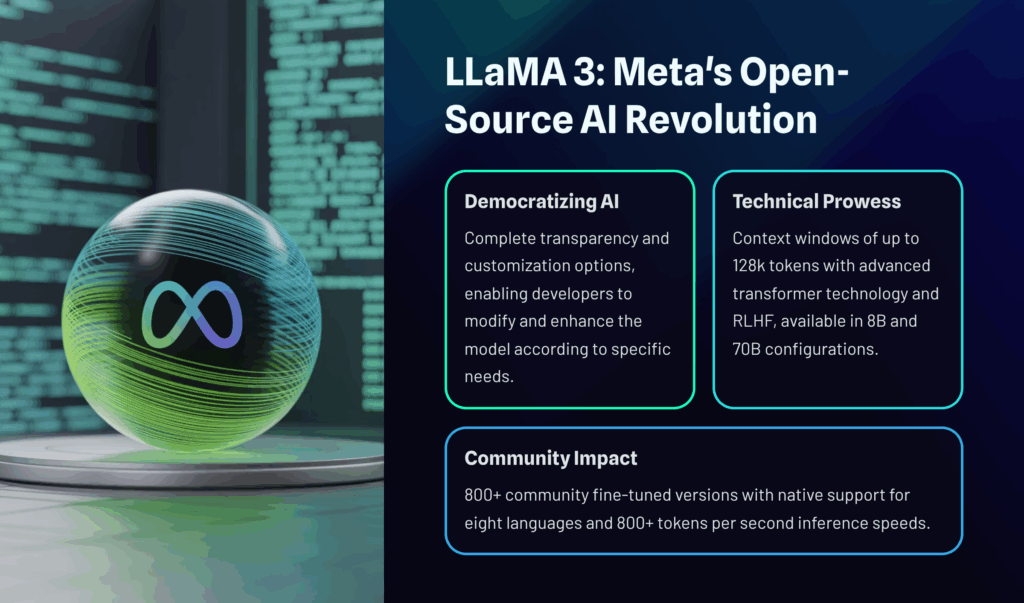
3. ECMAScript 2025: JavaScript’s Evolution Continues
The approval of ECMAScript 2025 on June 25, 2025, brings a carefully curated set of enhancements that promise to make JavaScript development more efficient and enjoyable. This year’s update focuses on practical improvements that address real-world development challenges.
Headline Features:
- Built-in Global Iterator: Standardizes iteration across data structures without external libraries
- Enhanced Set Methods: New operations like Set.prototype.intersection() for cleaner data manipulation
- Regular Expression Improvements: Better pattern matching capabilities for data validation tasks
- Pipeline Operator (Proposal): Cleaner function chaining with the |> operator
The developer community’s reaction has been particularly positive, with discussions on social platforms highlighting how these features reduce code complexity and improve maintainability. The new Set methods alone are expected to significantly impact data-heavy applications in sectors like e-commerce and analytics.
From a business perspective, these improvements translate directly to reduced development costs and faster time-to-market for web applications. The cleaner, more readable code also means easier maintenance and lower long-term technical debt.
Industry trends suggest these features will be particularly valuable for emerging technologies like Web3 applications and AI-integrated web tools, where data manipulation and functional programming patterns are increasingly important.
Source: https://aimindupdate.com/2025/08/04/ecmascript-2025-the-hottest-new-javascript-features-trends/
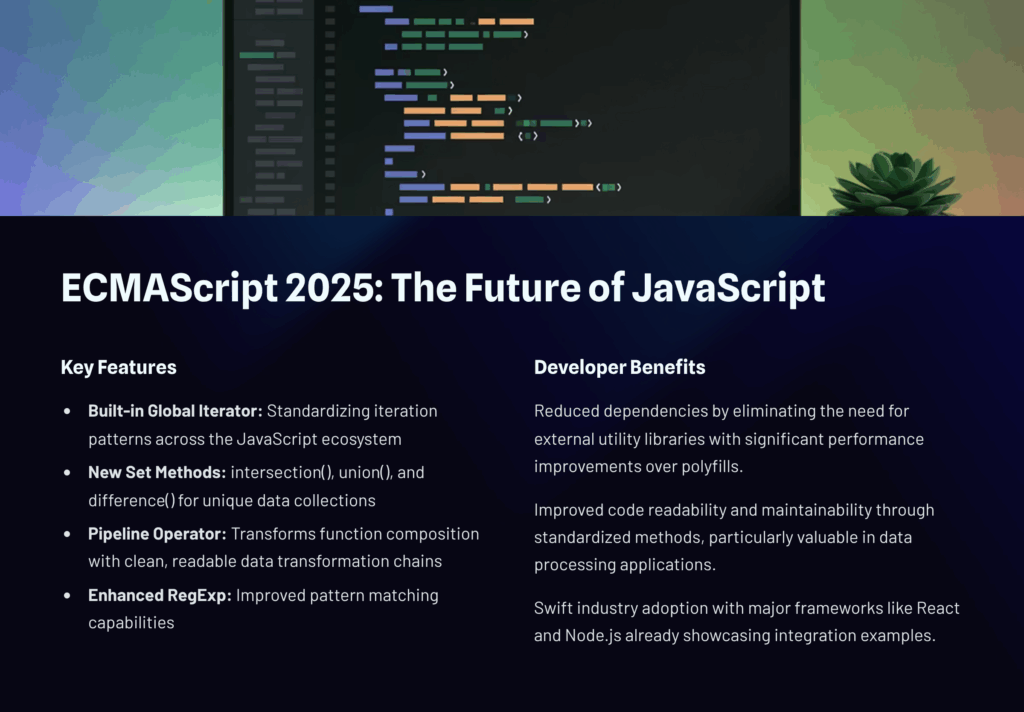
4. OpenAI’s Arctic Expansion: 100,000 GPUs Head to Norway
Sam Altman’s latest venture, dubbed “Stargate Norway,” represents one of the most ambitious AI infrastructure projects to date. This massive undertaking involves deploying 100,000 NVIDIA GPUs in Narvik, Northern Norway, powered entirely by renewable energy sources.
The choice of Norway isn’t coincidental – the country’s abundant hydropower resources and cool climate provide ideal conditions for energy-intensive AI operations. The facility will consume 230MW of renewable power, equivalent to a small city’s energy needs, but without the carbon footprint typically associated with such massive computational requirements.
Strategic Implications:
- First major OpenAI presence in Europe, signaling geographical diversification
- Sustainable AI development addressing environmental concerns
- Enhanced computing capacity for advanced AI model training
- Potential catalyst for AGI (Artificial General Intelligence) development
This expansion aligns with Altman’s previously stated vision of scaling to over 100 million GPUs in the future – a goal that would require an estimated $3 trillion investment. The Norwegian facility represents a significant step toward this ambitious target while demonstrating responsible environmental stewardship.
The broader implications extend beyond OpenAI’s operations. This investment could establish Europe as a major player in global AI infrastructure, potentially influencing data sovereignty and AI governance discussions across the continent.
However, the project also raises questions about energy grid stability and the concentration of AI computing power in the hands of a few major players.
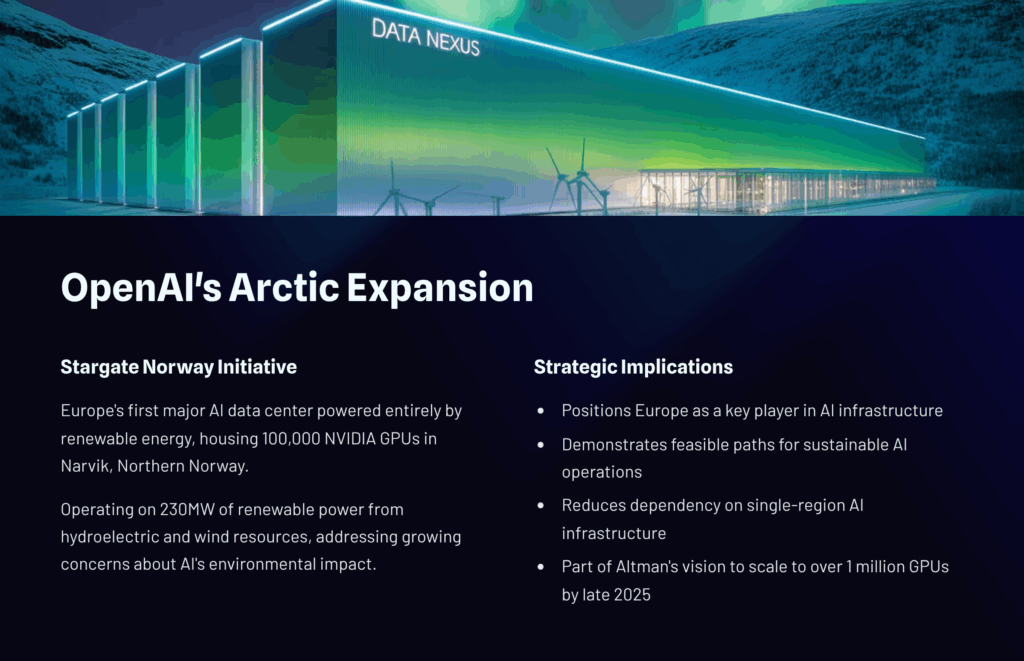
5. Google’s Gemini AI: Multimodal Intelligence Redefined
Google’s Gemini AI continues to push the boundaries of multimodal artificial intelligence, handling text, images, audio, video, and code with unprecedented sophistication. The latest insights reveal how Gemini is positioning itself as a comprehensive AI solution for diverse applications.
What sets Gemini apart is its native multimodal processing capability. Unlike systems that retrofit different modalities onto text-based models, Gemini was designed from the ground up to understand and generate content across multiple formats simultaneously.
Technical Breakthroughs:
- End-to-end Audio Processing: Direct signal handling without intermediate conversion steps
- Parallel Thinking Architecture: Enhanced reasoning through simultaneous thought streams
- Scalable Model Variants: Ultra for complex tasks, Pro for balanced performance, Nano for edge devices
- Advanced Reinforcement Learning: Continuous improvement through human feedback integration
The practical applications are already showing impressive results. Educational platforms are using Gemini for interactive learning experiences that combine visual, auditory, and textual elements. In healthcare, early implementations are assisting with diagnostic imaging analysis that incorporates patient history and clinical notes.
Perhaps most intriguingly, the latest Gemini 2.5 Deep Think variant demonstrates enhanced reasoning capabilities that allow for step-by-step problem-solving approaches, particularly in mathematical and coding challenges.
Looking forward, Google’s roadmap includes integration with robotics applications and environmental monitoring systems, suggesting a future where AI seamlessly bridges digital and physical worlds.
Source: https://aimindupdate.com/2025/08/03/gemini-google-ai-a-beginners-guide-based-on-x-trends/
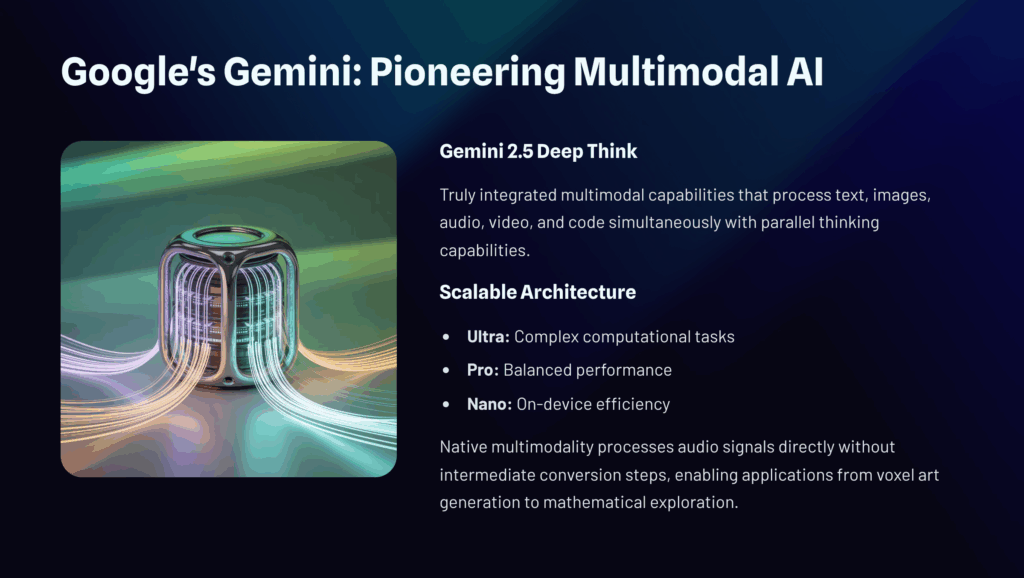
6. Zuckerberg’s Bold Vision: Superintelligence for Everyone
Meta CEO Mark Zuckerberg’s recent earnings call revelation about investing $66-72 billion in AI infrastructure this year alone has sent shockwaves through the tech industry. His bold promise of “superintelligence for everyone” represents one of the most ambitious AI initiatives to date.
The investment strategy goes far beyond typical corporate AI adoption. Meta is building toward what Zuckerberg describes as “personal superintelligence” – AI assistants that are extraordinarily capable and accessible to Meta’s 3.5 billion users across Facebook, Instagram, and other platforms.
Investment Breakdown:
- Data Centers: Massive computing infrastructure for AI training and inference
- Talent Acquisition: Recruiting top AI researchers and engineers globally
- Research and Development: Advancing fundamental AI capabilities
- Hardware Integration: Smart glasses and wearable AI devices
What’s particularly noteworthy is Meta’s approach to democratization. Unlike competitors focusing primarily on enterprise markets, Meta aims to make advanced AI capabilities available to ordinary consumers through their existing social media platforms.
The business justification appears sound – Meta’s AI-enhanced advertising has already driven significant revenue growth, with the company’s stock rising over 19% in 2025. However, the long-term bet on superintelligence represents a massive gamble on humanity’s AI future.
Critics point to potential risks including job displacement, privacy concerns, and the concentration of AI power. Supporters argue that Meta’s open-source approach (demonstrated with LLaMA) suggests a more accessible future for advanced AI capabilities.
Source: https://aimindupdate.com/2025/08/03/zuckerbergs-ai-ambition-superintelligence-for-everyone/
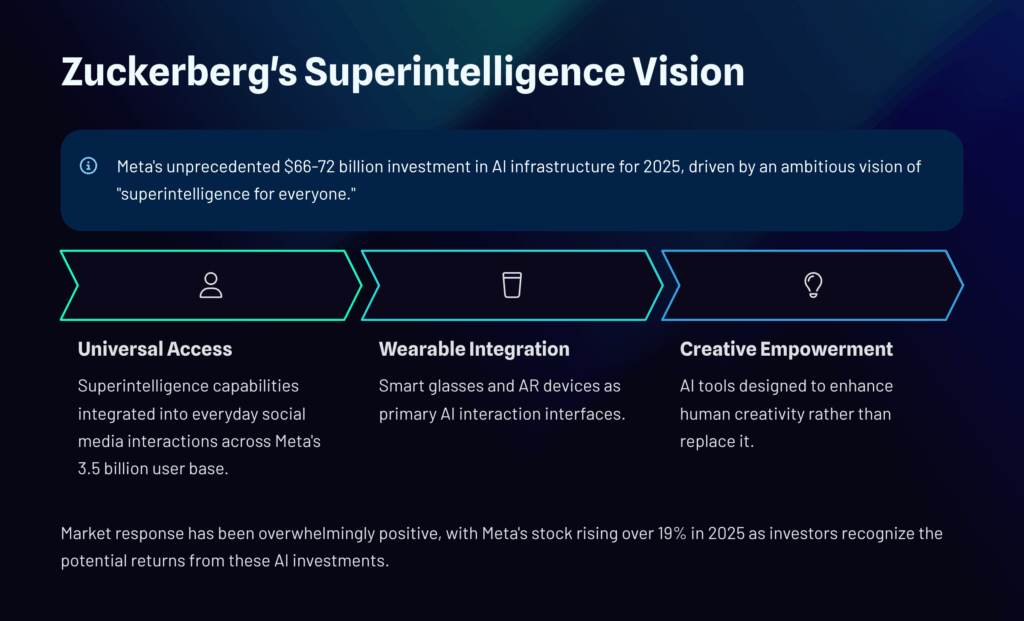
7. Informatica’s AI-Powered Data Revolution
Informatica’s Summer 2025 release of their Intelligent Data Management Cloud (IDMC) platform represents a significant leap forward in AI-powered data governance and master data management. These enhancements address critical challenges organizations face in preparing data for AI applications.
The platform’s AI-powered Master Data Management (MDM) capabilities now automate data matching and cleansing processes, dramatically reducing the manual effort required to maintain data quality. This is particularly crucial as organizations struggle to keep pace with the data requirements of modern AI systems.
Key Enhancements:
- Self-Service Tuning: Non-technical users can optimize data pipelines independently
- AI Copilot Integration: Intelligent assistance for complex data integration tasks
- LLM Integration: Natural language queries for data insights
- Enhanced Compliance Tools: Automated adherence to regulations like the EU AI Act
The timing couldn’t be better. As 2025 brings increased AI regulation and compliance requirements, organizations need robust governance frameworks. Informatica’s updates specifically address these needs with features like Model Context Protocol (MCP) support for AI model tracking and automated access controls.
Early adopters report up to 50% faster integration processes thanks to the new copilot functionality. This efficiency gain translates directly to reduced costs and faster time-to-value for AI initiatives.
The broader trend toward “AI-ready data” is reshaping how organizations think about information management. Rather than treating data preparation as a separate step, these tools integrate AI readiness into core data operations.
8. Claude 3: The Ethical AI Alternative
Anthropic’s Claude 3 family continues to distinguish itself in the competitive AI landscape through its unwavering focus on safety and interpretability. This “ethical AI revolution” offers a compelling alternative for organizations prioritizing responsible AI deployment.
The three-tier approach – Haiku for speed, Sonnet for balance, and Opus for maximum capability – provides flexibility while maintaining consistent ethical standards across all variants. This design philosophy reflects Anthropic’s commitment to constitutional AI, where the system is trained to follow a set of principles that align with human values.
Distinctive Features:
- Constitutional AI Framework: Built-in ethical guidelines and safety measures
- Reduced Hallucinations: Enhanced accuracy through rigorous training protocols
- Vision Capabilities: Advanced image and document processing with safety considerations
- Transparent Reasoning: Clear explanation of decision-making processes
Industry adoption has been particularly strong in sectors where accuracy and reliability are paramount. Healthcare organizations appreciate Claude 3’s reduced tendency toward hallucination, while educational institutions value its ability to provide thoughtful, balanced responses to complex queries.
The recent integration with platforms like Notion demonstrates Claude 3’s growing ecosystem presence. These partnerships expand the model’s practical utility while maintaining the safety-first approach that defines Anthropic’s philosophy.
Perhaps most importantly, Claude 3 serves as proof that advanced AI capabilities and ethical considerations aren’t mutually exclusive. As AI regulation increases globally, this approach may become the industry standard rather than a differentiating feature.
Source: https://aimindupdate.com/2025/08/02/claude-3-the-ethical-ai-revolution-beginners-guide/
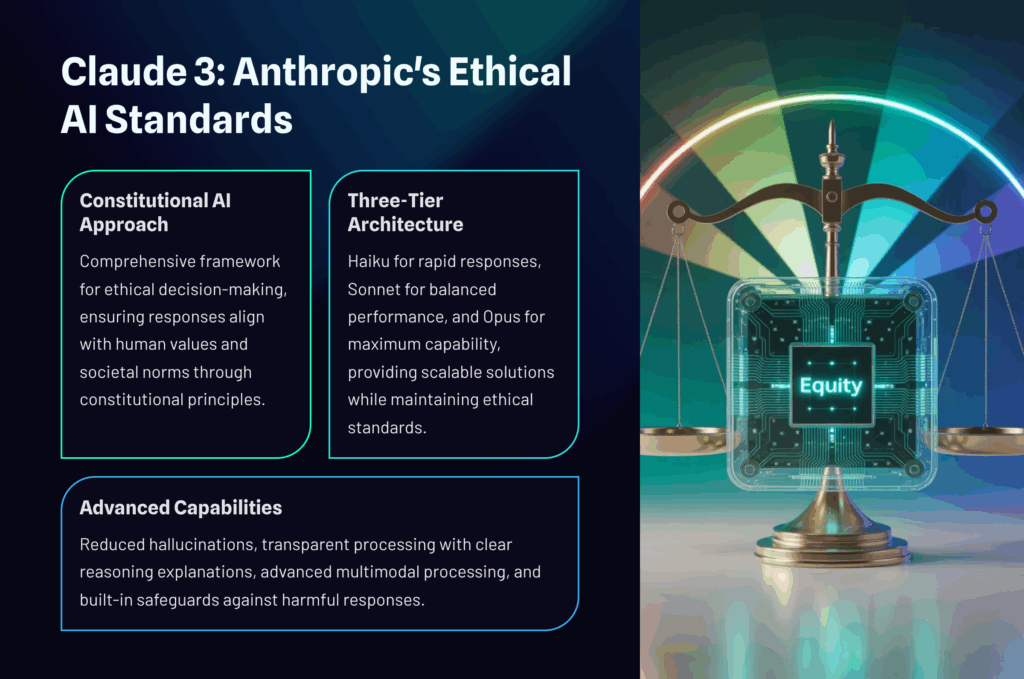
9. Azure VM Management Gets Smart with Project Flash
Microsoft’s Project Flash initiative is transforming how organizations manage Azure Virtual Machines, bringing AI-powered insights and automation to cloud infrastructure management. This development addresses longstanding challenges in VM oversight and optimization.
Traditional VM management required constant manual monitoring and reactive problem-solving. Project Flash introduces predictive capabilities that identify potential issues before they impact operations, representing a shift from reactive to proactive infrastructure management.
Core Capabilities:
- Real-time Telemetry: Comprehensive performance monitoring and alerting
- Predictive Analytics: AI-driven insights into potential system issues
- Automated Remediation: Self-healing capabilities for common problems
- Integration Bridge: Seamless connection between cloud services and underlying infrastructure
The practical impact extends beyond mere monitoring. Organizations report significant reductions in downtime and operational overhead. The system’s ability to predict and prevent issues has proven particularly valuable for mission-critical workloads.
Recent emergency fixes, such as addressing Windows 11 update issues affecting Azure VMs, demonstrate the system’s responsiveness to real-world challenges. These rapid resolutions showcase the value of integrated monitoring and automated response capabilities.
Looking forward, Project Flash’s AI capabilities are expected to evolve toward more autonomous management scenarios, potentially handling complex optimization tasks without human intervention.
Source: https://aimindupdate.com/2025/08/02/level-up-azure-vm-management-a-deep-dive-into-project-flash/
10. GPT-4o and GPT-5: The Next Generation of Language Models
OpenAI’s evolution from GPT-4o to the anticipated GPT-5 represents the culmination of years of advancement in large language model technology. These developments promise to reshape how we interact with artificial intelligence across virtually every domain.
GPT-4o, with its “omni” capabilities, already demonstrates remarkable multimodal proficiency. The model seamlessly handles text, voice, images, and code, making it feel more like a natural conversation partner than a traditional computer interface.
Technical Achievements:
- Multimodal Integration: Native processing of diverse input types
- Extended Context: Up to 128K tokens for comprehensive understanding
- Enhanced Reasoning: Improved logical thinking and problem-solving
- Real-time Processing: Faster response times with maintained quality
The anticipation surrounding GPT-5 centers on its potential for breakthrough reasoning capabilities. Early indicators suggest the model may handle up to 20 million tokens of context, enabling unprecedented analysis of large documents, datasets, and complex scenarios.
Perhaps most significantly, GPT-5 is expected to exhibit more autonomous behavior, capable of planning and executing multi-step tasks with minimal human guidance. This advancement could fundamentally change how we approach automation across industries.
The educational implications alone are staggering. With enhanced study modes and personalized tutoring capabilities, these models could democratize access to high-quality education globally.
However, the power of these systems also raises important questions about job displacement, misinformation, and the concentration of AI capabilities. The ongoing development must balance innovation with responsible deployment.
Source: https://aimindupdate.com/2025/08/02/gpt-4o-gpt-5-openai-the-complete-beginners-guide/
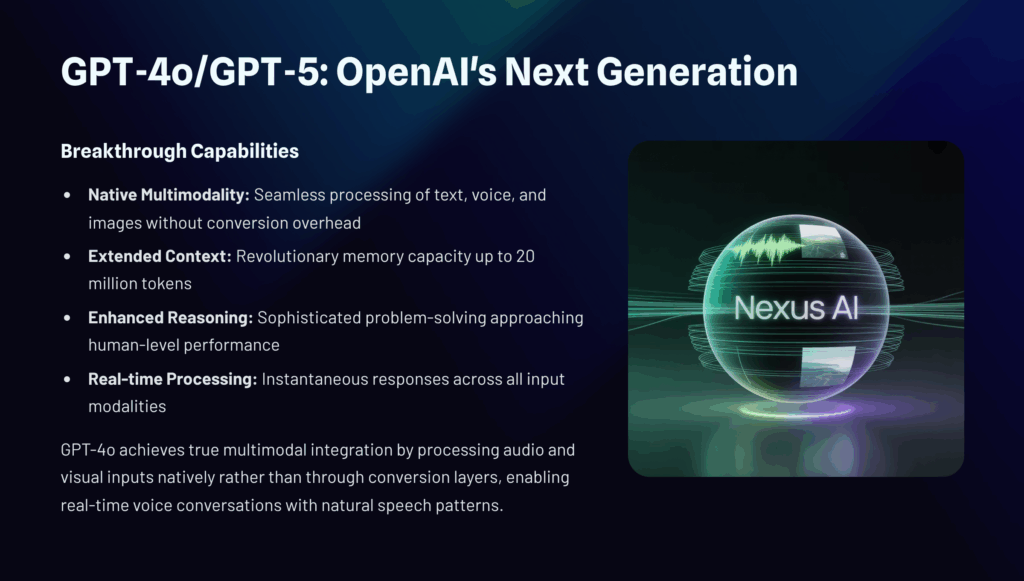
Looking Ahead: The Convergence of Innovation
This week’s developments reveal several converging trends that will likely define the technology landscape in the coming months:
Democratization of AI: From Meta’s open-source LLaMA 3 to Microsoft’s accessible development tools, the barriers to AI adoption continue to fall.
Sustainability Focus: OpenAI’s renewable-powered Norwegian facility reflects growing awareness of AI’s environmental impact and the industry’s commitment to sustainable scaling.
Multimodal Evolution: The progression from text-only to fully multimodal AI systems is accelerating, with practical applications emerging across industries.
Ethical Considerations: Projects like Claude 3 demonstrate that responsible AI development is not just possible but commercially viable.
Enterprise Integration: Tools like Informatica’s IDMC updates and Azure’s Project Flash show how AI is becoming integral to enterprise operations rather than a standalone novelty.
As we move forward, the companies and technologies covered this week will likely play pivotal roles in shaping our AI-integrated future. The rapid pace of development suggests that staying informed about these trends isn’t just valuable – it’s essential for anyone working in or with technology.
The convergence of powerful AI models, improved development tools, sustainable infrastructure, and ethical frameworks creates an unprecedented opportunity for innovation. However, it also demands thoughtful consideration of the implications for society, work, and human creativity.
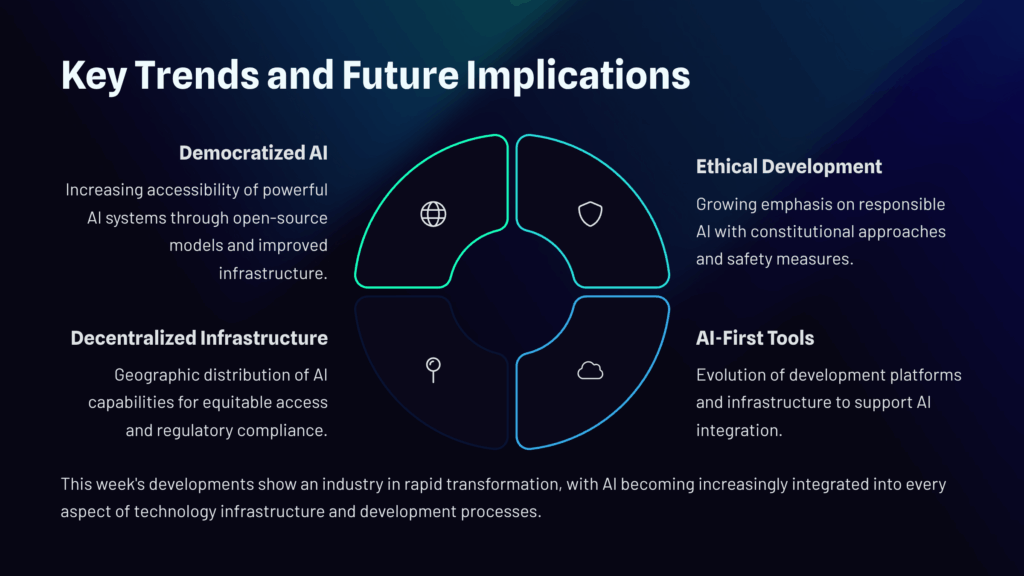
Final Thoughts
This week’s digest captures a moment of remarkable innovation in artificial intelligence and related technologies. From the technical depths of neural network architectures to the business implications of multi-billion-dollar investments, these developments collectively paint a picture of an industry in rapid transformation.
The key takeaway isn’t just the individual advancements, but their interconnected nature. OpenAI’s infrastructure expansion enables more powerful models, which drive demand for better development tools like .NET Aspire, which in turn require sophisticated data management solutions like those from Informatica.
For professionals, organizations, and curious observers alike, understanding these connections provides crucial context for navigating our increasingly AI-integrated world. The future isn’t just about individual AI capabilities – it’s about how these technologies combine to create entirely new possibilities for human achievement and creativity.
As we continue to track these developments, one thing remains clear: we’re witnessing the emergence of a technological ecosystem that will likely define the next decade of human progress. Staying informed, thinking critically, and planning strategically will be essential for success in this evolving landscape.
Tags: artificial intelligence, OpenAI, Meta AI, LLaMA 3, GPT-5, Google Gemini, Azure, cloud computing, JavaScript, ECMAScript 2025, machine learning, data governance, Informatica, Anthropic Claude, .NET Aspire, superintelligence, neural networks, tech trends, AI development, enterprise AI, multimodal AI, AI ethics, automation, digital transformation
